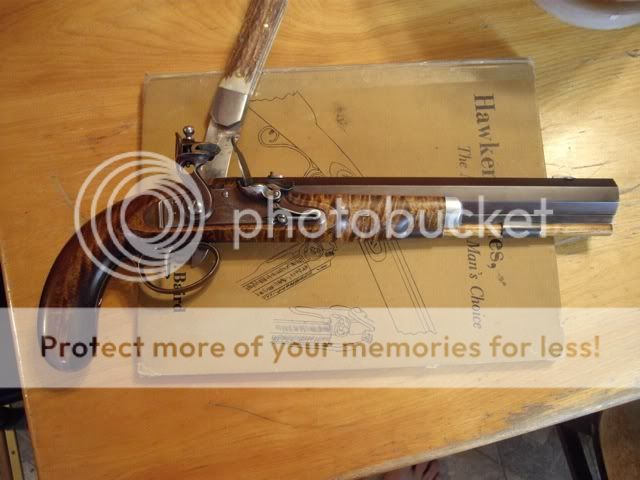Capper said:
All well and good Dan.
I'm still not convinced there's any magic in a round ball of lead compared to a bullet.
I'm just not going for..... "ballistics don't matter."
Look at the FPE for a 45-70-405 Sharps then look at 243.
Which has the highest FPE?
I can assure you based on information from local hunters and a trusted friend acknowldged expert in most things firearms who has guided many many elk hunters a 243 (or even a 264 WM with 120-140 gr) WILL OFTEN NOT PENETRATE FAR ENOUGH TO KILL ELK or BEAR when the range is 40 yards or under.
Even the anemic 45-70-405 Smokeless load does not have this problem.
I guess what I should have said is in the context of modern ballistics FPE applied to lead round balls and lead bullets such as those fired from a 40-45-50 caliber Sharps are INVALID.
A 45-100 or 44-77 or 50-90 will actually STOP an American Bison better than a 300 mag will. This from a guy who has seen a LOT of buffalo shot he was amazed that the buffalo we shot with Sharps with chest shots did not run off and stay with the herd which is all too common it seems with HV magnums.
F.E. Selous thought that the 450 BPE with a 365 gr bullet propelled by 120 gr of BP was a wonderful load for African Lion. Modern experts would think he was nuts based on bullet energy.
The patched round ball SO LONG AS IT IS PROPERLY SIZED FOR THE GAME is a very efficient hunting projectile, this has been repeatedly proven for a very long time.
I have shot a deer with a blackpowder loaded 38-40, the most anemic BP arm I have ever used. The deer ran about 40 yards and collapsed. If you shoot them with a 7mm mag in the same spot they run 40 to 100 yards and collapse. I shot a doe center of the lungs with a 44-90 with 92 gr of FF and a 400 gr soft bullet with a large flatpoint. This this was devastating on anything I shot with it, she ran 150 yards and dropped dead.
My son shot his first deer with a 45 caliber FL rifle with 45 grains of FFF, it made 100 yards. Ball did not even exit. But the shot placement was good. The 44-90 with far more energy did no better than the 45 RB and the range was near identical.
So lets see we have a 6.5 x55 (killed quite few deer with this, me and the kids) 30-06, 7mm mag (and numerous other "modern" calibers), 45-50-54-58-67 RB rifles with various powder charges. Various BPCRs from 38-40 to 50-90. ALL of which I have used or personally witnessed and often field dressed the game for hunters.
THE RESULT IS THE SAME WITH SIMILAR SHOT PLACEMENT 90+ percent of the time. The deer runs 40 yards and piles up. Sometimes they pile up at the shot sometimes run 200. The energy at impact is virtually irrelevant.
So tell me with the VAST range of impact energies why is this so?
Its because, for the most part ME or impact energy means almost nothing.
BUT the small bore modern rifles NEED the expansion that high velocity and high energy provides. A 54 Rb needs little expansion for make a large wound channel
The round ball, properly sized for the game need only give adequate penetration. While higher velocitys at impact will often produce more damage but this does not mean that the deer dies faster. Shoot the arteries off the heart with a 50-54 rb and you get arteries shot off deer dies. Do the same with a .662 ball and the whole top of the heart is pulverized. Deer still runs. Massive difference in damage little or no difference in the time the animal lives. In either case they live till the brain fails and this is usually 40 yards. The deer shot with the .662 ball made 55 long steps. There was a long string of blood, tissue and fat ejected back toward the gun, the ball struck at the base of the throat, made a hole almost as large as the heart at the top of the heart.
Massive blood loss. Deer still turned 90 degrees and ran...
She actually made it farther than the buck I had shot with a 38-40 that made tiny wound channels in the lungs.
I KNOW which one transmitted the most energy...
But that apparently did not mean much in the outcome.
Dan






